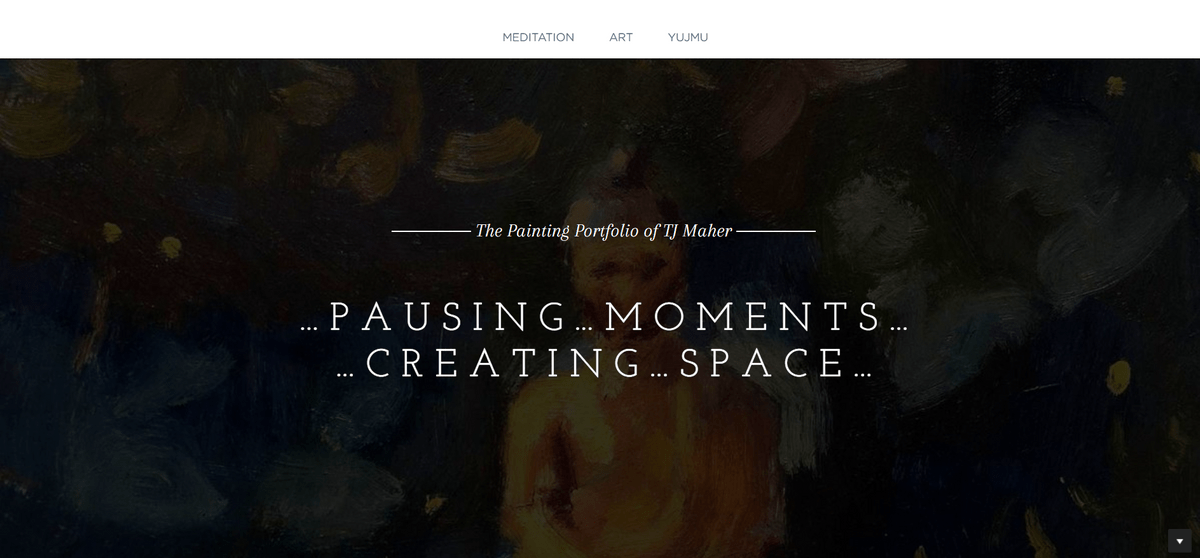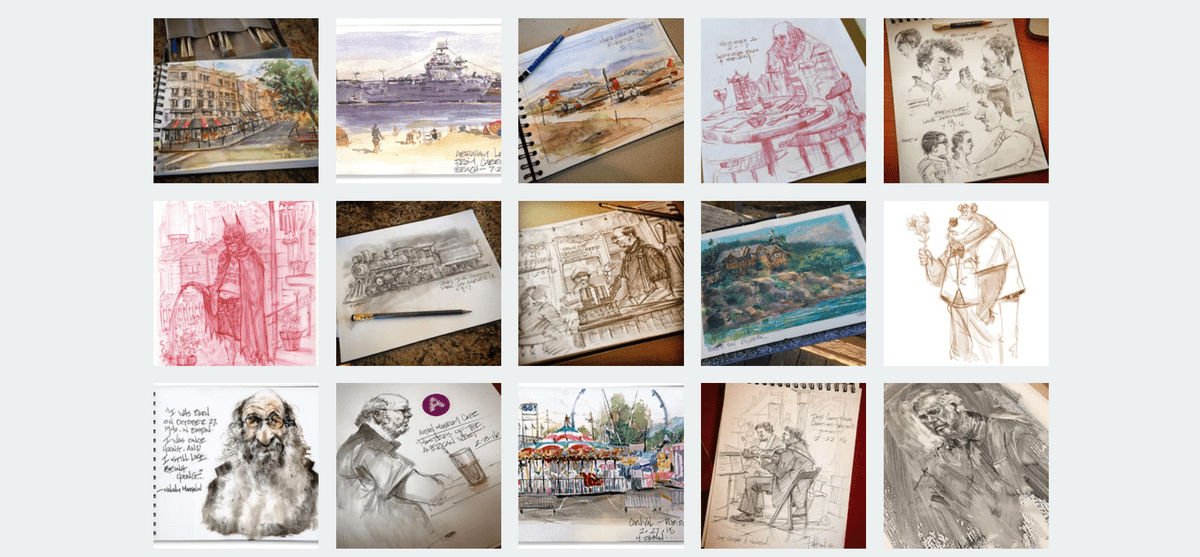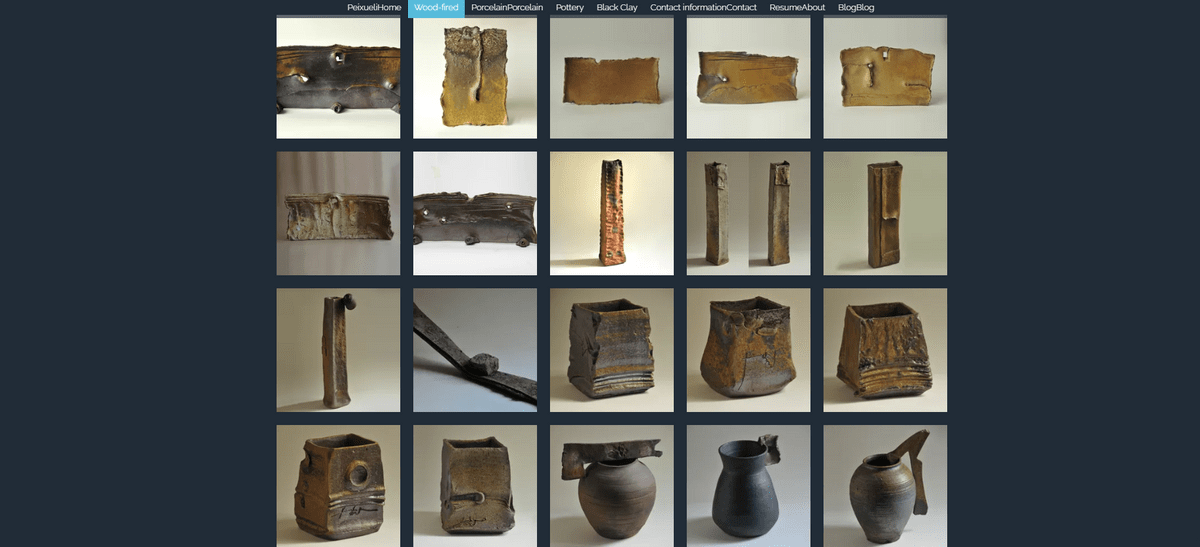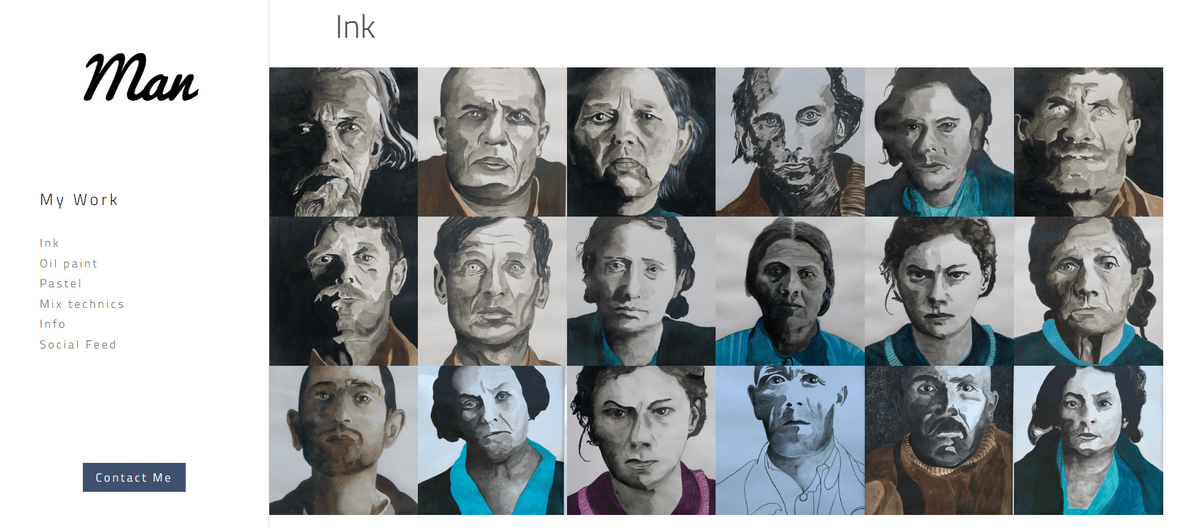Brush Strokes And Jokes: Contemporary Art In The Age Of Witty Creativity
Brush Strokes And Jokes: Contemporary Art In The Age Of Witty Creativity

Welcome to the fascinating world of contemporary art, where creativity knows no bounds and imagination runs wild. In this article, we will delve into the essence of modern art and explore the beauty of contemporary artwork that continues to captivate and inspire. Whether you're an art enthusiast or a curious beginner, join us on this journey as we unravel the allure of contemporary art.
Exploring the World of Contemporary Art
Contemporary art is a dynamic and ever-evolving genre that encompasses a wide range of artistic expressions created by today's artists. From traditional painting and sculpture to innovative digital installations, contemporary art defies conventions and pushes boundaries, inviting viewers to explore new perspectives and ideas.
Contemporary art challenges the status quo and invites viewers to question their preconceived notions about what art can be. With its emphasis on experimentation and pushing boundaries, contemporary art reflects our ever-changing world, making it a vital and thought-provoking form of artistic expression. Whether through thought-provoking installations or boundary-pushing performance art, contemporary artists continue to push the envelope and inspire audiences to see the world in new and unexpected ways.
Understanding the Essence of Modern Art
Modern art emerged in the late 19th century as artists began to break away from traditional styles and experiment with new forms of expression. This movement laid the groundwork for contemporary art, emphasizing individualism, self-expression, and a departure from historical or academic artistic norms.
Modern art revolutionized how we perceive and create art, challenging the conventional notions of beauty and aesthetics. Artists like Pablo Picasso and Vincent van Gogh paved the way for a more subjective and emotionally charged approach to artistic expression, inspiring future generations to push boundaries and explore new creative frontiers. As a result, modern art continues to provoke thought, spark controversy, and inspire awe in its viewers, solidifying its place as a cornerstone of contemporary culture.
Unveiling the Beauty of Contemporary Artwork
Contemporary artwork reflects the diversity and complexity of our modern world, addressing social issues, cultural dynamics, and personal narratives through thought-provoking visuals. With its unique characteristics, contemporary art invites us to embrace creativity in all its forms and appreciate the beauty found in unconventional mediums.
Contemporary art challenges traditional notions of beauty and skill, pushing the boundaries of what is considered "art." It encourages viewers to engage with the world around them in new and unexpected ways, sparking conversations and inspiring change. Whether a thought-provoking installation or a visually stunning piece, contemporary art can captivate, challenge, and transform our understanding of the world.
Now that we've set the stage for our exploration of contemporary art's evolution, let's dive deeper into its origins and the influential figures who have shaped this captivating movement.
The Evolution of Contemporary Art
Image taken from The Art of Teejay
In tracing the origins of contemporary art, we are transported to the late 20th century when artists began to break away from traditional artistic conventions. This movement responded to the changing world, marked by rapid technological advancements, globalization, and social upheaval. The term contemporary art emerged as a reflection of these shifting dynamics and a departure from the rigid structures of modern art.
Tracing the Origins of Contemporary Art
Contemporary art is rooted in the rebellious spirit of artists who sought to challenge existing norms and push boundaries. It encompasses various artistic expressions, including painting, sculpture, photography, and mixed media. The movement gained momentum in the 1960s and 1970s as artists rebelled against traditional artistic conventions and experimented with new forms of expression.
Contemporary art has continued to evolve and challenge societal norms, with artists exploring new mediums and technologies to push the boundaries of creativity. From immersive installations to digital art, the movement defies traditional categorizations and embraces diversity in artistic expression. As contemporary art reflects the ever-changing world around us, it serves as a powerful mirror that encourages us to question, reflect, and engage with the complexities of our modern society.
Influential Contemporary Artists That Shaped the Movement
Numerous influential contemporary artists have left an indelible mark on this movement. Visionaries like Andy Warhol, Yayoi Kusama, and Banksy have redefined art through groundbreaking works that challenge societal norms and provoke thought-provoking discussions. Their innovative approaches have inspired countless others to embrace creativity without limitations.
It's no wonder that these trailblazing artists have garnered such widespread acclaim and admiration. Their ability to push boundaries and spark conversations through their art has revolutionized how we perceive and appreciate creativity. As we celebrate their impact, it's exciting to think about the next generation of artists who will undoubtedly carry on this legacy of fearlessly challenging the status quo. Who knows what groundbreaking masterpieces await us in the future?
Unique Characteristics of Contemporary Art
One striking characteristic of contemporary art is its ability to defy categorization or easy definition. It thrives on diversity and embraces various styles, techniques, and subject matters. From abstract expressionism to pop art, contemporary artists continuously push boundaries by blending traditional mediums with unconventional materials or embracing digital technology.
By exploring the evolution of contemporary art through its origins, influential figures, and unique characteristics, we gain a deeper understanding of this dynamic movement that continues to shape our cultural landscape today.
Defining Contemporary Art
Image taken from Drawing On Experience
Contemporary art is a dynamic and ever-evolving form of expression that reflects the current societal and cultural landscape. Unlike traditional art, contemporary art embraces various mediums, techniques, and styles to convey thought-provoking messages and evoke emotions in the viewer.
What is Contemporary Art, and How It Differs from Traditional Art
Contemporary art challenges the conventional boundaries of artistic expression by incorporating unconventional materials, multimedia elements, and interactive experiences. It often addresses pressing social issues, political commentary, or personal narratives boldly and unapologetically. In contrast, traditional art tends to adhere to established techniques and subject matter.
Contemporary art is like the rebellious teenager of the art world, constantly pushing boundaries and challenging the status quo. It's about breaking free from the constraints of tradition and creating something thought-provoking, unconventional, and often controversial. And while traditional art may stick to the tried-and-true, there's no denying that contemporary art brings a fresh perspective and an exciting energy.
The Diverse Forms and Styles of Contemporary Art
From abstract paintings to avant-garde installations, contemporary art encompasses diverse forms that defy categorization. It includes street art, performance art, digital art, conceptual art, and more. Each style offers a unique perspective on the world and invites viewers to engage with the artwork on a deeper level.
1. Painting in Contemporary Art
Contemporary art often redefines traditional painting by exploring new techniques, subject matters, and conceptual frameworks. Artists in this form challenge conventional notions of representation, using a diverse range of styles and media. In the context of painting, the definition of contemporary art involves exploring current themes and reflecting on the complexities of the modern world. Contemporary artists create paintings beyond the visual aesthetic, often incorporating social, political, or environmental narratives. This form exemplifies the dynamic and evolving nature of contemporary art, where artists continuously experiment with the medium to express the essence of our contemporary society.
2. Sculpture in Contemporary Art
Sculpture has transformed contemporary art, moving beyond traditional materials and techniques. Artists redefine the very definition of contemporary art through sculptural forms that often incorporate found objects, recycled materials, and unconventional elements. The creations may be large-scale installations or interactive sculptures that engage with the audience and the surrounding space. This form allows for a more immersive and multidimensional experience, challenging viewers to reconsider their perceptions of form and space within the context of the present artistic landscape.
3. Digital and New Media Art in Contemporary Art
The advent of technology has significantly impacted contemporary art, giving rise to digital and new media art forms. Artists in this realm create contemporary artwork that harnesses the capabilities of digital tools, exploring virtual spaces, interactive installations, and immersive experiences. This form expands the definition of contemporary art by incorporating elements of interactivity, often blurring the boundaries between the physical and virtual worlds. Digital and new media art exemplify the ongoing dialogue between art and technology, providing artists with innovative ways to express their ideas and engage with a technologically driven society.
4. Conceptual Art in Contemporary Art
Conceptual art is a prominent form within contemporary art, emphasizing ideas and concepts over traditional aesthetic concerns. In this form, artists often create contemporary artwork that challenges the viewer's perceptions and invites intellectual engagement. In the context of conceptual art, the definition of contemporary art involves a departure from traditional art-making materials, focusing instead on the underlying ideas and the thought process behind the creation. Contemporary artists in this form explore themes such as identity, language, and societal structures, pushing the boundaries of what constitutes art and encouraging viewers to question preconceived notions.
5. Performance Art in Contemporary Art
Performance art is a dynamic and experiential form within contemporary art where artists use live actions and interventions to convey their messages. This form challenges the boundaries between the artist and the audience, often blurring the lines between theater, visual arts, and everyday life. Contemporary artists engaging in performance art redefine the traditional notions of art as a static object, emphasizing the transient and interactive nature of the artistic experience. This form allows for a direct and immediate connection with the audience, fostering a unique relationship between the creator and the observer in contemporary art.
Create A Contemporary Art: Tips and Inspiration
To create contemporary art that resonates with audiences, embrace experimentation, take risks, and explore unconventional ideas. Incorporate technology or multimedia elements into your work to push boundaries further. Draw inspiration from influential contemporary artists like Banksy, Yayoi Kusama, and Ai Weiwei, who have fearlessly challenged norms through innovative creations.
1. Understanding Contemporary Art
Before embarking on how to do it, it's crucial to understand what it entails clearly. Define contemporary art by exploring its diverse forms, styles, and the overarching theme of reflecting the current socio-cultural landscape. Familiarize yourself with the work of contemporary artists and the evolution of contemporary artwork to gain insights into this artistic movement's dynamic and ever-changing nature.
2. Identifying Personal Themes and Concepts
To create meaningful contemporary art, it's essential to identify personal themes and concepts that resonate with you as an artist. Consider issues, experiences, or narratives that are relevant in today's world and align with your artistic vision. The definition of contemporary art often involves a deep exploration of concepts beyond traditional aesthetics, encouraging artists to engage with societal, political, or environmental concerns in their work.
3. Experimenting with Mediums and Techniques
Contemporary art encourages experimentation with a variety of mediums and techniques. Explore unconventional materials, digital tools, or traditional and modern methods to create a unique visual language. Creating contemporary artwork often involves pushing the boundaries of what is considered "artistic," allowing for innovative approaches that challenge traditional norms in modern and historical art.
4. Contextualizing Your Artwork
Consider the context in which your contemporary art will be situated. Understanding the context adds depth and meaning to your creation, whether it's a physical space, a virtual environment, or an interactive installation. The definition of contemporary art is closely tied to its ability to engage with the current environment, so think about how your artwork will interact with its surroundings and how viewers will experience and interpret it.
5. Engaging with Conceptual Thinking
Conceptual thinking plays a significant role in creating contemporary art. Move beyond traditional aesthetics and focus on the underlying ideas and concepts that drive your artistic expression. Define contemporary art by the intellectual and philosophical depth it can achieve, using your work to provoke thought, challenge perceptions, or convey messages that go beyond the visual realm. Engaging with conceptual thinking adds layers of meaning to your contemporary artwork, making it a thought-provoking and enriching experience for both you as the artist and your audience.
The Impact of Contemporary Art
Image taken from Peixueli Art Studio
Contemporary art serves as a mirror of society and culture, reflecting the ever-changing world we live in. Through thought-provoking pieces, contemporary artists tackle social issues, political movements, and cultural shifts, sparking conversations and challenging norms.
How Contemporary Art Reflects Society and Culture
Contemporary art often serves as a reflection of the current societal and cultural landscape. Artists use their work to comment on pressing issues such as climate change, human rights, and identity politics. Whether through paintings, sculptures, or installations, contemporary art offers a unique lens through which to view the world.
Contemporary art has the power to spark meaningful conversations and challenge societal norms. Through thought-provoking imagery and unconventional mediums, artists push the boundaries of what is considered acceptable or taboo, forcing viewers to confront uncomfortable truths about our world. In a society where political correctness often reigns supreme, contemporary art is a necessary reminder that discomfort can lead to growth and progress.
Contemporary Art's Influence on Other Art Forms
The impact of contemporary art extends beyond its realm, influencing other art forms such as literature, music, and film. Many contemporary artists collaborate across disciplines to create immersive experiences that blur the lines between different forms of artistic expression. This cross-pollination creates a dynamic environment for creativity to thrive.
Contemporary art's influence can also be seen in how it challenges societal norms and prompts essential conversations about politics, identity, and social issues. Through provocative and thought-provoking works, contemporary artists push boundaries and inspire audiences to question the status quo. This ability to provoke meaningful dialogue is a testament to the power of contemporary art in shaping our cultural landscape.
Recognizing the Contributions of Contemporary Artists
Contemporary artists play a crucial role in shaping our understanding of the world and pushing boundaries within the art world. Their innovative approaches challenge traditional notions of beauty and aesthetics while opening up new possibilities for artistic expression. We celebrate their dedication to pushing boundaries and inspiring others by recognizing their contributions.
By delving into how contemporary art reflects society and culture while influencing other art forms, we gain a deeper appreciation for its impact on our lives. As we continue to recognize the contributions of contemporary artists in shaping our collective consciousness through their thought-provoking works, we can embrace the ever-evolving nature of modern art in all its striking diversity.
Contemporary Art in the Digital Age
Image taken from Man
Contemporary art has seamlessly integrated technology into its creative process. Artists are embracing digital tools to push the boundaries of traditional art forms, resulting in a new wave of innovative and boundary-pushing artwork. Technology has become integral to contemporary art, from digital painting to interactive installations, opening up endless possibilities for artistic expression.
Embracing Technology in Contemporary Art
The embrace of technology in contemporary art has revolutionized the creative process, allowing artists to experiment with new mediums and techniques. Digital tools such as virtual reality, 3D printing, and interactive software have enabled artists to create immersive experiences that transcend traditional artistic boundaries. This fusion of art and technology has given rise to a new era of creativity, where artists can explore uncharted territories and engage audiences in unprecedented ways.
Integrating technology in art has also opened up new avenues for collaboration and cross-disciplinary exploration. Artists can now partner with engineers, scientists, and programmers to push the boundaries of what is possible in creative expression. This symbiotic relationship between art and technology fosters innovation and challenges conventional thinking, paving the way for redefining what it means to create and experience art in the 21st century.
Strikingly Innovative Digital Contemporary Artwork
Technology integration has led to strikingly innovative digital contemporary artwork that challenges conventional notions of artistry. From mesmerizing digital sculptures to captivating multimedia installations, artists are pushing the limits of what is possible with digital mediums. These groundbreaking works not only showcase the immense talent and creativity of contemporary artists but also demonstrate the transformative power of technology in shaping the future of art.
The marriage of technology and art has opened up new avenues for creative expression, allowing artists to explore the intersection of the digital and physical worlds in ways never imaginable. With the ability to manipulate and transform data, artists create immersive experiences that challenge our perceptions and expand our understanding of what art can be. As we embrace technological advancements, we expect to see even more boundary-pushing digital artwork that redefines the artistic landscape for future generations.
How Digital Platforms Have Revolutionized the Art World
Digital platforms have played a pivotal role in revolutionizing how contemporary art is created, shared, and experienced. Social media, online galleries, and virtual exhibitions have given artists unprecedented opportunities to showcase their work to global audiences. This democratization of art has allowed for greater accessibility and inclusivity within the art world, breaking down barriers and fostering a more diverse and vibrant creative community.
The rise of digital platforms has also allowed for a more direct and immediate connection between artists and their audiences. Through social media, artists can engage with their followers in real-time, sharing their creative process and gaining valuable feedback. This transparency and interaction have fostered community and collaboration, bringing art lovers closer to the artists they admire.
By embracing technology and leveraging digital platforms, contemporary artists are redefining what it means to create and experience art in the modern age. The fusion of creativity with cutting-edge technology is paving the way for an exciting evolution in contemporary art that promises to inspire and captivate audiences worldwide.
Kickstart a Contemporary Art Website With Us!
Image taken from Antoine Rangotte Troletti
Are you ready to dive into the captivating world of contemporary art? Look no further than our platform, where we celebrate the beauty and diversity of contemporary art. From thought-provoking installations to vibrant paintings, we showcase contemporary artwork that inspires and captivates you.
Showcasing Contemporary Art with Strikingly Websites
On our website, curated contemporary artwork highlights modern art's innovative and boundary-pushing nature. Whether you're drawn to abstract expressionism or minimalist sculptures, our platform celebrates contemporary art's diverse styles. We invite you to explore these strikingly unique pieces and embrace the beauty of this ever-evolving art movement.
1. Dynamic Templates for Contemporary Art Display
Strikingly offers a selection of dynamic templates well-suited for showcasing contemporary art. With its user-friendly interface and visually appealing designs, Strikingly allows artists to create a website that complements contemporary artwork's innovative and diverse nature. The templates provide a flexible canvas to define contemporary art by adapting to various styles, from abstract and conceptual to mixed media and digital art, ensuring that your website reflects the uniqueness of your creative expression.
2. Responsive Design for Modern Audiences
In contemporary art, reaching a modern and tech-savvy audience is paramount. Strikingly's responsive design ensures that your website adapts seamlessly to different devices, providing an optimal viewing experience for desktops, tablets, and smartphones. This feature is crucial for contemporary artists seeking to engage with a diverse audience and make their artwork accessible to viewers on various platforms, aligning with contemporary art appreciation's dynamic and ever-evolving nature.
3. Ease of Portfolio Presentation
Strikingly offers an intuitive platform for creating a portfolio that defines contemporary art. As contemporary artwork often involves diverse mediums and concepts, having an organized and visually appealing portfolio is essential. Strikingly's easy-to-use portfolio builder allows artists to showcase their work in a way that reflects the multifaceted nature of contemporary art, enabling viewers to navigate and explore the artist's creations seamlessly.
4. Built-in E-commerce Functionality
For contemporary artists looking to sell their artwork online, Strikingly provides built-in e-commerce functionality. This feature allows artists to define contemporary art through visual representation and by making their creations accessible for purchase. Whether selling original pieces, prints, or digital art, Strikingly's e-commerce capabilities provide a streamlined and secure platform for artists to connect with collectors and art enthusiasts worldwide.
5. Engage with a Global Audience
Strikingly enables contemporary artists to define their art globally by providing tools for effective online promotion. With features like SEO optimization and social media integration, artists can reach a broader audience, fostering connections with individuals who appreciate the dynamism and relevance of contemporary artwork. By creating a website with Strikingly, contemporary artists can engage with a global community and participate in the ongoing dialogue surrounding contemporary art in the digital age.
Encouraging Creativity and Expression through Contemporary Art
We believe in the power of contemporary art to inspire creativity and foster self-expression. Through our platform, we aim to encourage artists and art enthusiasts alike to engage with contemporary art meaningfully. Whether you're an established artist or just starting your creative journey, we provide resources and support for creating contemporary art that reflects your unique perspective.
The Continued Evolution of Contemporary Art and Its Impact on Society
As contemporary artists continue to push boundaries and challenge traditional norms, the impact of their work on society cannot be understated. Our platform aims to showcase how contemporary art reflects societal values, cultural shifts, and global perspectives. Join us in exploring the continued evolution of contemporary art and its profound impact on society.
Join us as we celebrate the dynamic world of contemporary art on Strikingly! Chat with us today!





